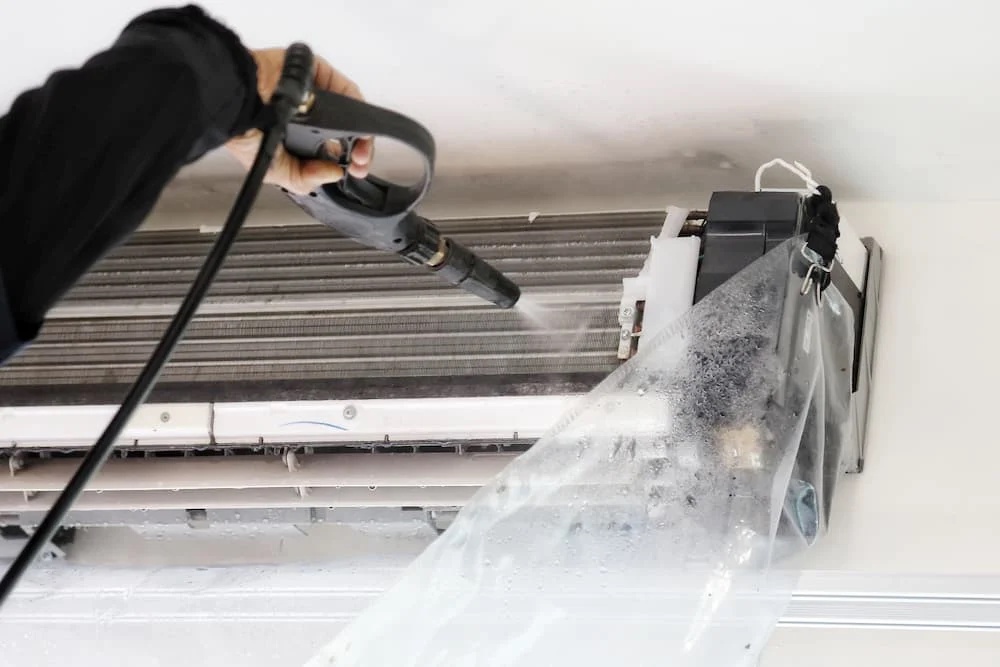As the temperature rises, the importance of a well-functioning air conditioning system becomes evident. Even the most advanced AC units can lose efficiency over time, primarily due to dirt and debris buildup on the coils. Air conditioning cleaning in Brisbane is a crucial maintenance task that can improve cooling efficiency and extend the lifespan of your unit.
In this guide, you will discover some DIY tips for cleaning your air conditioning coils.
Understanding Air Conditioning Coils
Air conditioning systems have two sets of coils: the evaporator coils located inside your home and the condenser coils situated outside. The evaporator coils absorb heat from indoor air, while the condenser coils release it outdoors. These coils can accumulate dust, dirt, pollen, and other debris, hindering heat transfer and reducing the system's efficiency.
DIY Cleaning Tips
DIY cleaning tips help maintain the efficiency and longevity of your air conditioning system. By taking proactive steps to clean the coils yourself, you can reap several benefits. Cleaner coils facilitate better heat transfer, allowing your AC unit to operate and cool your home more effectively.
DIY cleaning saves you money by reducing the need for professional maintenance or repair services. Regular maintenance, including coil cleaning, can prevent costly breakdowns and prolong the lifespan of your HVAC system.
Safety First
Before you begin AC coil cleaning, ensure your unit is turned off at the thermostat and the power supply is disconnected. Wear gloves and protective eyewear to prevent injury from sharp edges or chemical cleaners.
Outdoor Unit Maintenance
Start by inspecting the outdoor condenser unit. Remove any debris like leaves, twigs, or grass clippings from the exterior fins using a soft brush or vacuum cleaner with a brush attachment. Be gentle to avoid bending the fins, as this can restrict airflow.
Coil Cleaning Solution
Prepare a cleaning solution by mixing equal parts water and mild detergent in a spray bottle. You can use a commercial coil cleaner available at hardware stores. Avoid using harsh chemicals like bleach, as they can damage the coils.
Cleaning the Coils
Flushing AC coils involves spraying the cleaning solution onto the condenser coils, focusing on areas with heavy dirt buildup. Use a soft brush or AC condenser coil cleaning brush to scrub the coils, working from top to bottom gently. Take care not to apply excessive pressure, as this could damage the delicate fins.
Rinse Thoroughly
After coil cleaning, rinse them thoroughly with a hose or pressure washer. Start from the top and work your way down to ensure all traces of the cleaning solution and dirt are removed. Avoid using high-pressure settings, as this could bend the fins or cause coil damage.
Indoor Coil Maintenance
Moving indoors, locate the evaporator coils found near the air handler or furnace. Accessing these coils may require removing a panel or access door. Once exposed, inspect the coils for any visible dirt or debris.
Gentle Cleaning
Using a soft brush or vacuum cleaner with a brush attachment, carefully remove any dust or debris from the evaporator coils. Clean AC coil fins and do not bend the delicate fins or damage the coil's tubing. If the coils are heavily soiled, you may need to use a commercial coil cleaner following the manufacturer's instructions.
Check Drainage
While you clean the AC evaporator coil, check the condensate drain pan and drain line for any clogs or blockages. Use a wet/dry vacuum to remove any standing water and clear the drain line if necessary. A clogged drain can lead to water damage and mould growth inside your home.
Regular Maintenance Schedule
To maintain optimal cooling efficiency, incorporate coil cleaning into your regular HVAC maintenance schedule. Aim to clean the coils at least once a year before the start of the cooling season. Replace air filters regularly to prevent dust and debris from accumulating on the coils.
DIY cleaning empowers homeowners to take control of their HVAC maintenance schedule. By performing routine cleaning tasks yourself, you can ensure that your air conditioning system operates at peak performance throughout the year.
Tips are essential for homeowners looking to maximise the efficiency, reliability, and lifespan of their air conditioning systems while minimising maintenance costs. With proper maintenance and care, enjoy a comfortable indoor environment and peace of mind, knowing that your HVAC system is operating optimally.
Conclusion
Cleaning your air conditioning coils is a simple yet effective way to improve AC cooling and prolong your HVAC system lifespan. By following these DIY tips and incorporating coil cleaning into your regular maintenance routine, you can ensure your home stays cool and comfortable year-round while saving energy and reducing utility costs. If you're unsure about any aspect of coil cleaning or HVAC maintenance, contact a professional technician for assistance.


No comments yet